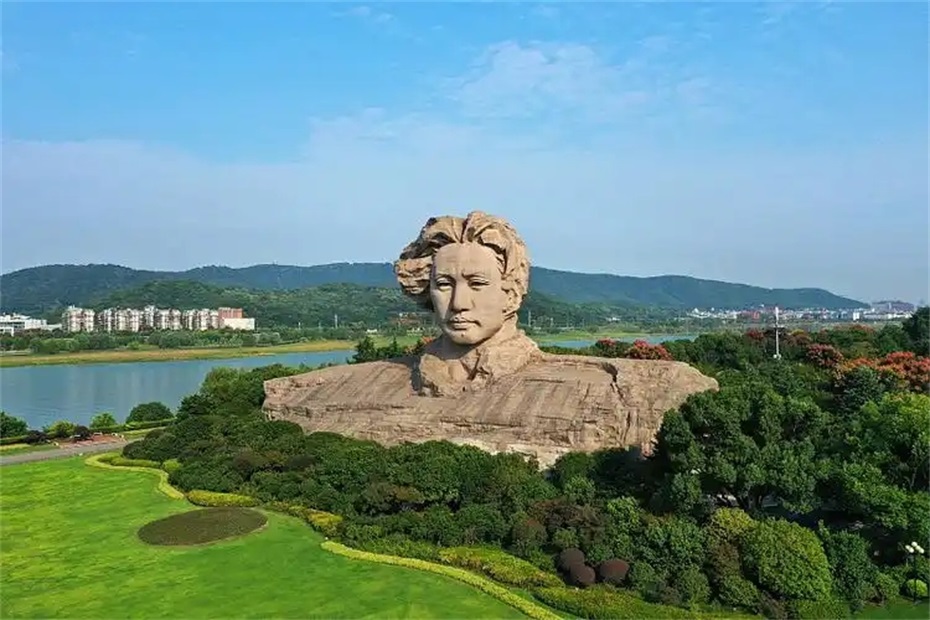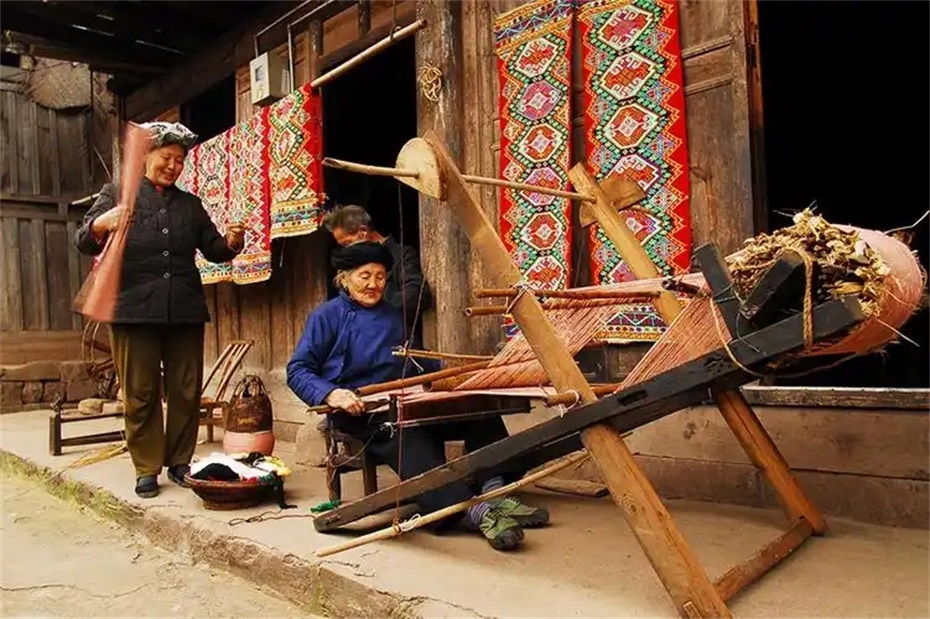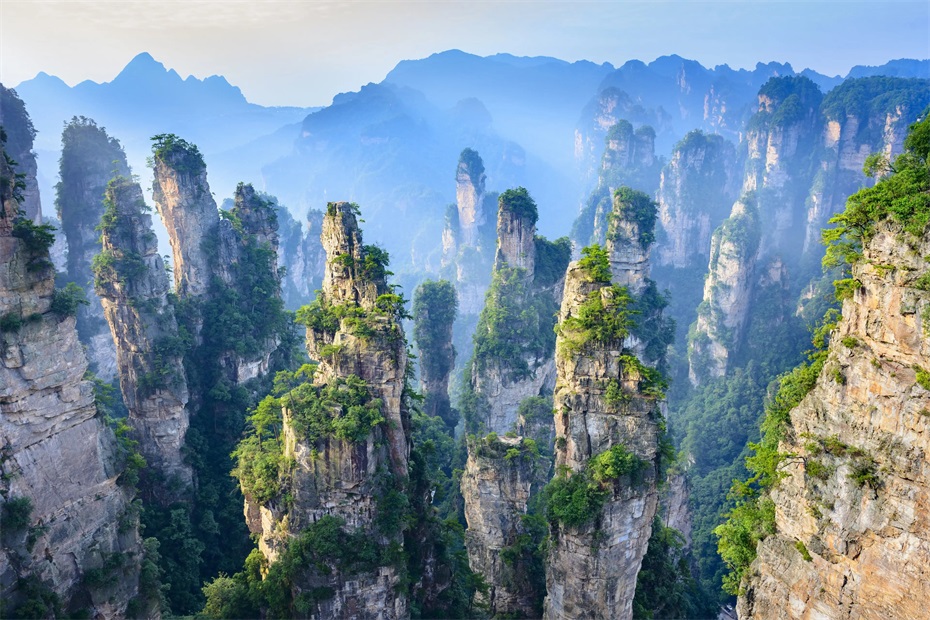Hunan Province
Overview of Hunan Province

Hunan Province, abbreviated as "Xiang", is located in central China and the middle reaches of the Yangtze River. It is named after most of the area south of Dongting Lake. The total area of the province is 211800 square kilometers, with 14 prefecture level administrative regions (13 prefecture level cities, 1 autonomous prefecture) under its jurisdiction, and a permanent population of 66.04 million people (2022 data). In 2022, the total regional GDP of the province reached 4.87 trillion yuan, ranking ninth in the country. It is an important agricultural province, industrial base, and tourist destination in China.
Hunan Province currently governs 13 prefecture level cities including Changsha (provincial capital), Zhuzhou, Xiangtan, Hengyang, Shaoyang, Yueyang, Changde, Zhangjiajie, Yiyang, Chenzhou, Yongzhou, Huaihua, and Loudi, as well as the Xiangxi Tujia and Miao Autonomous Prefecture. As an important province in the Yangtze River Economic Belt, Hunan is known as the "land of fish and rice", "land of non-ferrous metals", and "land of non-metallic minerals", and is also an important source of inspiration for the Chinese revolution.
2Ӣ Geographical features
1. Location characteristics
Hunan Province is located between 24 ”ć 38 ”ä and 30 ”ć 08 ”ä north latitude and 108 ”ć 47 ”ä and 114 ”ć 15 ”ä east longitude. It borders Jiangxi to the east, Chongqing and Guizhou to the west, Guangdong and Guangxi to the south, and Hubei to the north. The province is located in the transition zone from the Yunnan-Guizhou Plateau to Jiangnan hills and from the Nanling Mountain Mountains to Jianghan Plain. It is an important hub connecting the eastern coast and the western inland.
2. Terrain and landforms
The terrain of the whole province is shaped like a horseshoe with mountains on three sides and an opening towards the north:
East: Luoxiao Mountain Range
West: Wuling Mountains, Xuefeng Mountains
South: the Nanling Mountain Mountains
Central region: Hills of central Hunan
North: Dongting Lake Plain (13% of the province's area)
3. Water system distribution
Xiangjiang River system: the mother river of Hunan, running north-south
Zijiang River System: Major Rivers in the Southwest
Yuanjiang River system: the main river in the western region
Lishui River System: Major Rivers in the Northwest
Dongting Lake: China's second largest freshwater lake
4. Climate characteristics
Belonging to subtropical monsoon humid climate:
Annual average temperature: 16-18 ”ę
Annual precipitation: 1200-1700 millimeters
Significant features: distinct four seasons, simultaneous rain and heat
3Ӣ Historical context
1. Origin of Civilization
Paleolithic Age: Yuchanyan Site in Dao County (12000 years ago)
Neolithic Age: Pengtoushan Culture (9000 years ago)
During the Shang and Zhou dynasties: the active areas of Sanmiao and Baiyue
2. Organizational history
Spring and Autumn Period and Warring States Period: Important Territory of Chu State
During the Qin and Han dynasties, Changsha Commandery and Wuling Commandery were established
Tang Dynasty: Establishment of Hunan Observation Envoy
Qing Dynasty: Establishment of Hunan Province's administrative system
3. Modern and Contemporary Development
1850s: The Rise of the Hunan Army
1920s: Farmers' Movement Center
After the establishment of the People's Republic of China: construction of important industrial bases
21st Century: Implementation of the Central Rise Strategy
4Ӣ Cultural Essence
1. Regional cultural characteristics
Hunan culture: practical application, daring to be the first
Chu Culture: Romantic Art Style
Red Culture: The Spirit of the Cradle of Revolution
Ethnic minority culture: Tujia and Miao ethnic customs
2. Intangible Cultural Heritage

Folk art: Xiang embroidery, Tujia brocade, Miao silver jewelry
Traditional skills: Liling underglaze multicolored porcelain, black tea making
Folk culture: Dragon Boat Festival customs by the Miluo River, Tujia hand waving dance
3. Dialect characteristics
Xiangyu: Most parts of the province
Southwest Mandarin: Northwest Region
Gan dialect: Eastern regions
Hakka dialect: Southern regions
Minority languages: Miao language, Tujia language
5Ӣ Tourist destinations
1. World Heritage Sites

China Danxia (Langshan)
Laosicheng Site (Tusi Site)
Wanli Tea Ceremony (Hunan section)
2. 5A level scenic spot
Zhangjiajie Wulingyuan National Scenic Spot Tianmen Mountain Tourist Area
Hengyang Nanyue Hengshan Tourist Area
Xiangtan Shaoshan Tourist Area
Yueyang Tower Junshan Island Scenic Area
Xiangxi Fenghuang Ancient City Tourist Area
3. Featured tourism
Landscape Wonders Tour: Zhangjiajie, Langshan
Red research tour: Shaoshan, Huaming Tower
Ancient Town Style Tour: Phoenix and Furong Towns
Hunan Cultural Tour: Yuelu Academy, Yueyang Tower
6Ӣ Food map
1. Characteristics of Hunan cuisine

Xiangtan: Steamed preserved meat and rock sugar Xianglian
Hengyang: Hengdong soil vegetables, fish meal
Xiangxi: Blood Duck, Sour Soup Fish
2. Featured snacks
Stinky tofu
Sugar oil cake
Rice noodles
taste shrimp
spicy salted duck
3. Specialty drinks
anhua dark tea
Junshan Silver Needle Tea
jiugui liquor
Hunan lotus seeds
7Ӣ Development Status
1. Industrial system
Construction Machinery: Sany Heavy Industry, Zoomlion Heavy Industry
Rail Transit: Zhuzhou Electric Locomotive
Cultural Creativity: Hunan Radio and Television, Malanshan Video Cultural and Creative Park
Modern Agriculture: The Origin of Hybrid Rice
2. Transportation network
High speed railway: "Three Vertical and Five Horizontal" backbone network
Water transportation: Dongting Lake waterway system
Aviation: Changsha Huanghua International Airport
Highway: The mileage of expressways exceeds 7000 kilometers
3. Innovation ecosystem
Changsha Zhuzhou Xiangtan National Independent Innovation Demonstration Zone
Yuelu Mountain University Science and Technology City
Malanshan Video Cultural and Creative Industry Park
8 national high-tech zones
From the shores of Dongting Lake to the peaks of Wuling, from Yuelu Academy to Shaoshan Chong, this land of "Furong Country" is writing a magnificent chapter of high-quality development in Hunan in the new era with the spirit of "caring about the world and daring to be the first". There is both the poetic feeling of "seeing all the mountains become famous and the forests become colorful" and the heroic feeling of "making many sacrifices". It is becoming an important practice place for Chinese path to modernization.
simliy
